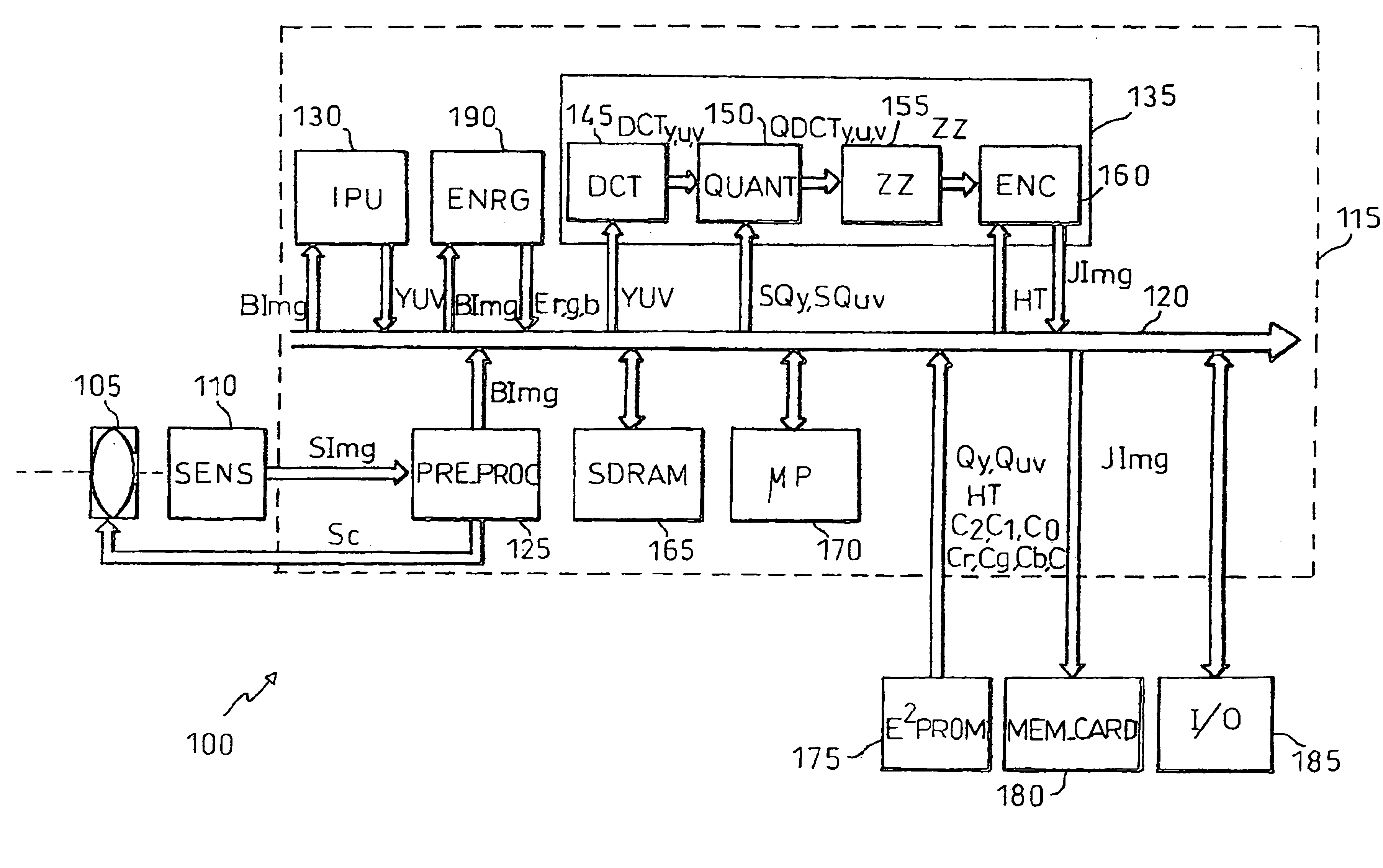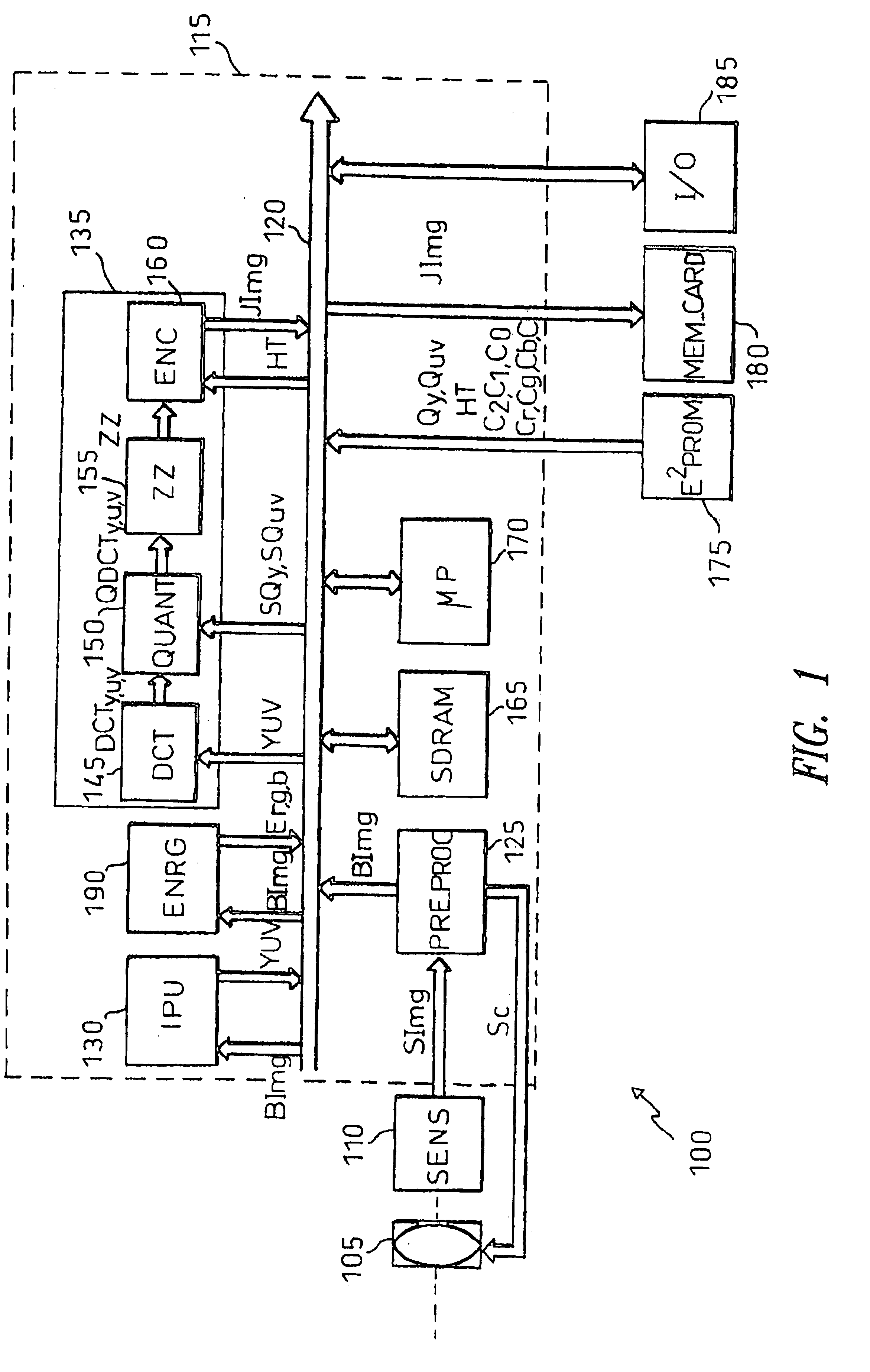Method of compressing digital images
a digital image and compression factor technology, applied in the field of compressing digital images, can solve the problems of high computation time, large power consumption of known methods, and difficult algorithmic compression factor control, and achieve the effect of reducing the number of known methods
- Summary
- Abstract
- Description
- Claims
- Application Information
AI Technical Summary
Benefits of technology
Problems solved by technology
Method used
Image
Examples
Embodiment Construction
With reference in particular to FIG. 1, this shows a digital still camera 100 for taking digital images representative of real scenes. A digital image is constituted by a matrix with N rows and M columns (for example, 640 rows by 480 columns); each element of the matrix consists of several digital values (for example three values each one of 8 bits, ranging from 0 to 255) representative of respective optical components of a pixel.
The camera 100 includes an image-acquisition unit 105 formed by a diaphragm and a set of lenses for transmitting the light corresponding to the image of the real scene onto a sensor unit (SENS) 110. The sensor unit 110 is typically constituted by a Charge-Coupled Device (CCD); a CCD is an integrated circuit which contains a matrix of light-sensitive cells, each one generating a voltage the intensity of which is proportional to the exposure of the light-sensitive cell. The voltage generated by each light-sensitive cell is supplied to an analog / digital conver...
PUM
 Login to View More
Login to View More Abstract
Description
Claims
Application Information
 Login to View More
Login to View More - R&D
- Intellectual Property
- Life Sciences
- Materials
- Tech Scout
- Unparalleled Data Quality
- Higher Quality Content
- 60% Fewer Hallucinations
Browse by: Latest US Patents, China's latest patents, Technical Efficacy Thesaurus, Application Domain, Technology Topic, Popular Technical Reports.
© 2025 PatSnap. All rights reserved.Legal|Privacy policy|Modern Slavery Act Transparency Statement|Sitemap|About US| Contact US: help@patsnap.com



